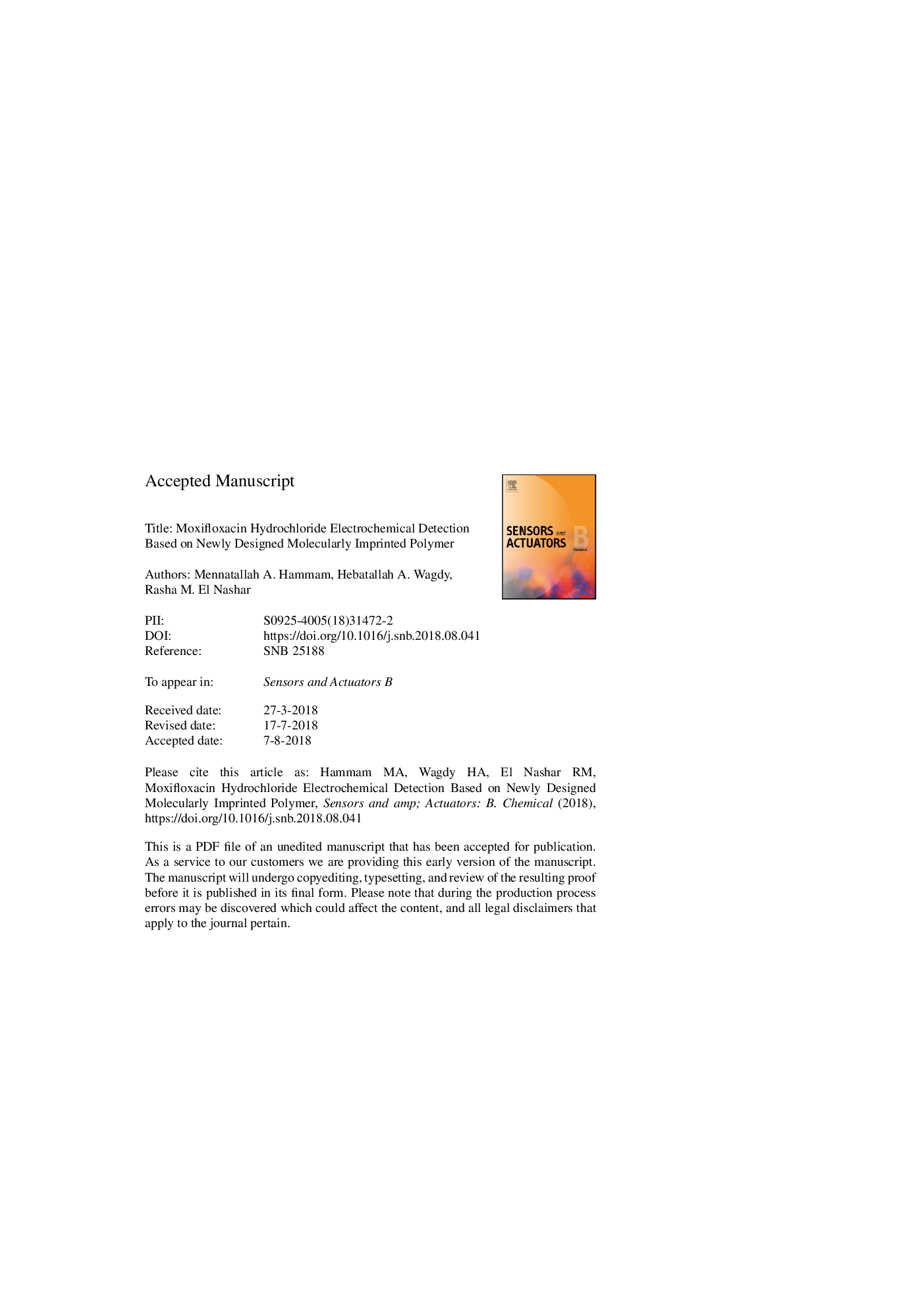| Article ID | Journal | Published Year | Pages | File Type |
|---|---|---|---|---|
| 7138561 | Sensors and Actuators B: Chemical | 2018 | 39 Pages |
Abstract
Moxifloxacin HCl, a fourth generation fluoroquinolone antibacterial agent developed to treat some respiratory and dermatological infections. In this paper, a molecularly imprinted polymer was developed for specific recognition and quantification of moxifloxacin HCl in different matrices. Nine molecularly imprinted polymers were synthesized using moxifloxacin HCl as the template, methacrylic acid or 4- vinylpyridine as the functional monomers, ethylene glycol dimethacrylate as the cross linker and mixture of dimethyl sulfoxide and acetonitrile as the porogen. Following the non-covalent approach, polymers were prepared using thermal free radical bulk polymerization method. Best binding performance was for the polymer prepared using the ratio of 1:4:20 (template: functional monomer: crosslinker) in both water and methanol. This molecularly imprinted polymer was used as the recognition material in potentiometric based PVC membranes. Effect of the amount of polymer, type of plasticizer, soaking time and pH of the sample solution were studied. The sensor containing 1% MIP, 33% PVC and 66% DOP showed the nearest slope (55.9â±â0.86âmV/decade) to the Nernestian values over concentration range (1.0âÃâ10â5 to 1.0âÃâ10-2M). It was used for the determination of moxifloxacin HCl in its pure form, Avalox® tablets (400âmg/tablet) and spiked human urine samples using the standard addition method with mean percentage recoveries ranging from 96.6 to 102.8%. Lifetime of the sensor was found to be 4 months when kept dry in air.
Related Topics
Physical Sciences and Engineering
Chemistry
Analytical Chemistry
Authors
Mennatallah A. Hammam, Hebatallah A. Wagdy, Rasha M. El Nashar,
